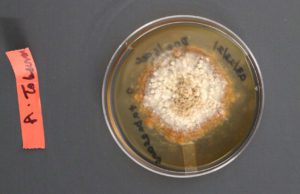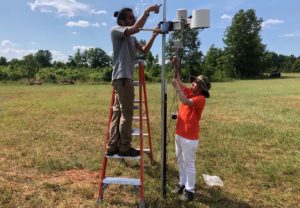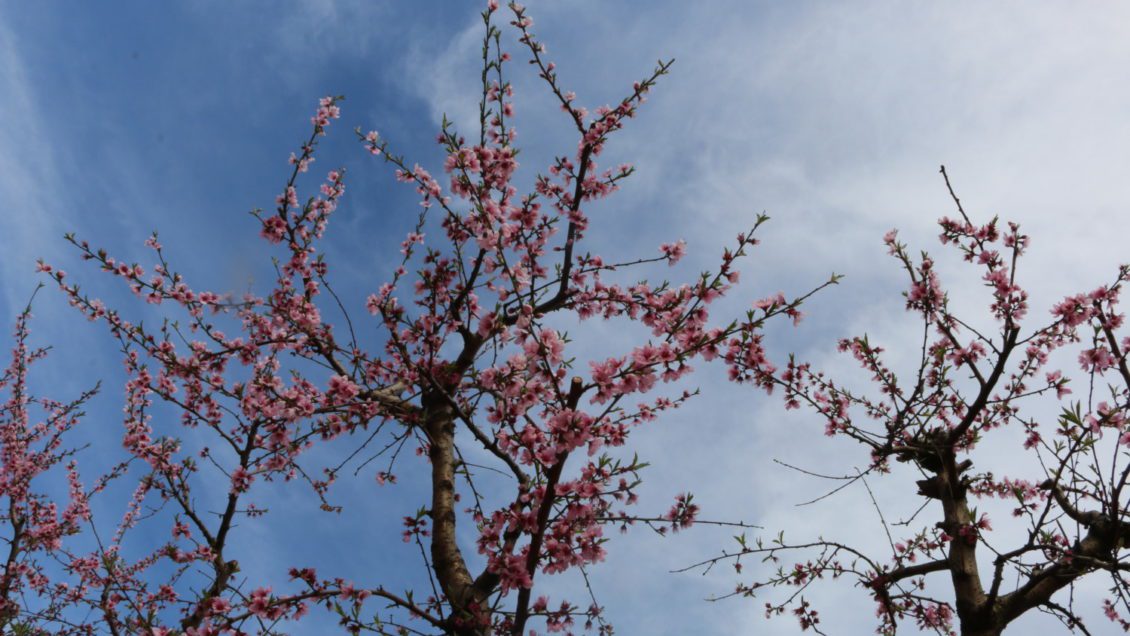The South Carolina peach industry is a major contributor to the state’s economy and the fruit is a favorite for many people, but a devastating fungus is a constant threat to this jewel of the South.
The honey fungus (Armillaria tabescens) causes Armillaria root rot, also known as oak root rot. There are no controls for this disease, which costs farmers millions of dollars each year in crop losses.

Some Clemson University scientists are studying this fungus to help South Carolina peach growers grow more profitable crops. The latest study is led by Sachin Rustgi, an assistant professor of molecular breeding at the Clemson Pee Dee Research and Education Center (REC) in Florence.
Rustgi has received a grant from the South Carolina Department of Agriculture to develop management strategies for Armillaria root rot. This study involves a two-pronged approach, including “vaccinating” peach trees with the tomato yellow leaf curl virus. The virus used for this study has been modified so that it does not cause disease and replicates as it spreads throughout host plants.
“During our study, we propose to modify the tomato yellow leaf curl virus by installing a piece of Armillaria root rot resistant-pathogen that will produce copies as the virus replicates,” Rustgi said. “This will function somewhat like a vaccine on the fungus. We believe this will help stop the spread of the fungus and help make the host plant resistant to Armillaria root rot.”

In addition to “vaccinating” host plants, the study also involves treating surrounding soil with double-stranded RNA (dsRNA) to target the Armillaria root rot. Results of the tests will be available to growers at meetings and field days. All safety measures will be followed.
“We will be in constant communication with the Environmental Protection Agency during our study and testing,” Rustgi said.
South Carolina is the second-largest peach producer in the United States. In 2020, South Carolina produced 80,000 tons of peach, bringing in about $113 million in revenue. Additionally, the peach industry creates about 1,500 jobs annually.
However, in the past decade, the peach industry has suffered severe production losses due to unpredictable weather conditions and root diseases, namely Armillaria root rot. This disease worsens with continued replanting in the same orchard.
Armillaria root rot costs peach producers in South Carolina and Georgia more than $8 million annually.
Clemson peach research

To help solve problems of the peach industry, Clemson University has an interdisciplinary team of researchers and Clemson Cooperative Extension Service agents who provide research-based information to advance the fruit industry in South Carolina and beyond. The Peach Team consists of faculty researchers, county Extension agents and specialists working together to solve the problems of the peach industry.
At the Edisto REC in Blackville, South Carolina, Clemson plant bacteriologist Hehe Wang is leading an effort against the bacterium Xanthomonas arboricola pv. pruni (Xap). This bacterium causes bacterial spot disease. New strains that are resistant to antibiotics and tolerant to copper sprays used to manage bacterial spot have emerged in South Carolina peach orchards.
“Annual losses of more than $20 million are estimated during years when the disease is heavy in South Carolina and Georgia,” Wang said. “This disease is difficult to control and once it makes its way to an orchard, it’s there for the life of that orchard. It’s a constant battle.”
In addition to locations around the state, Clemson peach research also takes place at the Musser Fruit Research Center, part of the Piedmont REC.
For more Clemson peach research information, go to https://bit.ly/CU_PeachResearch.
-END-
Rustgi’s study is funded by the South Carolina Department of Agriculture through the United States Department of Agriculture Specialty Crop Block Grant Agreement 21SCBPSC1010-00. Any opinions, findings, conclusions, or recommendations expressed in this material are those of the authors and do not necessarily reflect the views of the SCDA nor the USDA.
Feature image caption: Some Clemson University scientists are studying the fungus that causes Armillaria root rot to help South Carolina peach growers grow more profitable crops.
Get in touch and we will connect you with the author or another expert.
Or email us at news@clemson.edu

